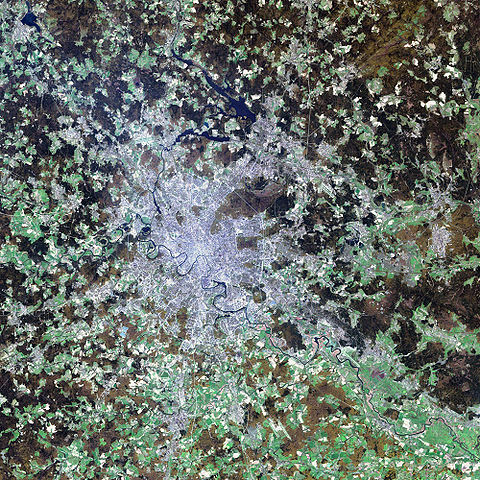
File:Moscow satellite image.jpeg

Size of this preview: 480 × 480 pixels.
| |
This is a file from the Wikimedia Commons. Information from its description page there is shown below.
Commons is a freely licensed media file repository. You can help. |
| DescriptionMoscow satellite image.jpeg |
Deutsch: Satellitenbild von de:Moskau
English: satellite image of the city of en:Moscow.
|
| Date | 2 August 2002 |
| Source | NASA Visible Earth project, http://visibleearth.nasa.gov/view_rec.php?id=3434 |
| Author | NASA/USGS EROS Data Centre Satellite Systems Branch/Landsat 7/ETM+ |
Licensing
| Public domainPublic domainfalsefalse |
 |
This image is in the public domain because it contains materials that originally came from the United States Geological Survey, an agency of the United States Department of the Interior. For more information, see the official USGS copyright policy. български | català | Deutsch | English | español | eesti | suomi | français | galego | italiano | 한국어 | македонски | മലയാളം | Nederlands | polski | português | русский | Türkçe | 中文(香港) | 中文(简体) | +/− |
|
| Public domainPublic domainfalsefalse |
 |
This file is in the public domain because it was solely created by NASA. NASA copyright policy states that "NASA material is not protected by copyright unless noted". (See Template:PD-USGov, NASA copyright policy page or JPL Image Use Policy.) |
 |
 |
Warnings:
|
File usage
The following pages on Schools Wikipedia link to this image (list may be incomplete):
Find out more
SOS Childrens Villages aims to make Wikipedia suitable for young learners. Thanks to SOS Childrens Villages, 62,000 children are enjoying a happy childhood, with a healthy, prosperous future ahead of them. Sponsoring a child is a great way to help children who need your support.
